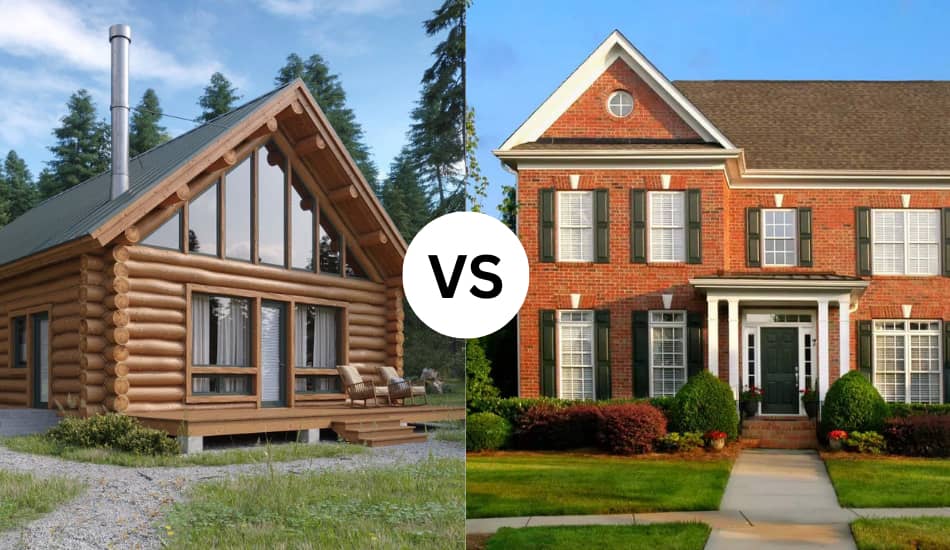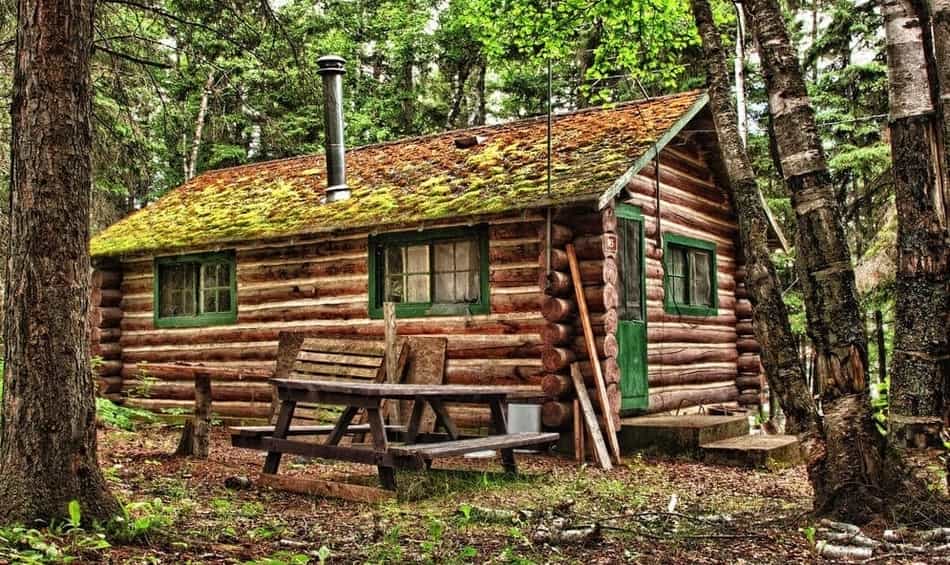Difference Between a Log Cabin and Brick House

Log cabins and brick houses aren’t the same at all. They have key characteristics that set them apart. One of the first things you’ll notice is how different they look. Log cabins have a special design that stands out. When you compare costs and construction time, log cabins come out ahead. In this article, we’ll talk about the main differences between these two houses. So, let’s start!
What is the Difference Between a Log Cabin and Brick House? Log cabins have a rustic, nature-blended vibe, while brick homes radiate a classic, structured feel. Log cabins tend to be quicker to construct and offer impressive insulation benefits, whereas brick homes stand as symbols of durability and time-tested construction.
Although the differences between a log cabin and a brick-built home are huge, they still have some things in common. Below, we will go through the main differences between them.
Table of Contents
8 Main Differences Between Log Cabin Vs. Brick House

In this section, we’ll discuss the main difference between a log cabin and brick house. Here are things you need to know:
Design and Look
Log cabins stand out due to their natural aesthetic appeal. They’re often designed with the surrounding environment in mind and are mostly located in nature. On the other hand, brick houses are built in large cities and populated areas.
Cost Difference
Building a log cabin usually costs less than a traditional brick house. Several factors contribute to this: the speed of construction reduces labor expenses, and wood, being natural, is more cost-effective than brick. The energy-intensive process of producing concrete also adds to the cost of brick houses.
Construction Speed
Building a log cabin is a much faster and less messy process. Most log cabins are made in a modern factory where each piece is precisely cut. Once the materials for the log cabin are delivered, the pieces easily fit together without the need for adjustments. In contrast, brick houses involve a more time-consuming process, with each brick needing careful placement, which takes a lot of time.
Related Article: Difference Between a Log Cabin And Garden Room
Environmentally Friendly
It’s undeniable that producing concrete leaves a substantial carbon mark on the environment. On the other hand, the materials used for log cabins are eco-friendly. Building a log cabin demands significantly less energy than constructing a conventional home. Extracting wood is less energy-intensive than manufacturing other building materials.
Log cabin construction helps in decreasing greenhouse gas emissions. To put it in perspective, nearly 10% of global CO2 emissions stem from concrete production. It’s alarming to note that every ton of concrete produced is equivalent to a ton of CO2 emissions.
Timber that is used for log cabins is in most cases, approved by the Forest Stewardship Council (FSC), ensuring sustainable sourcing. Living in a log cabin means you’re actively reducing your carbon footprint.
Healthy Environment
Log cabins promote a healthier living environment than brick houses. With no plasterboard walls, these cabins have much less dust. The natural wooden walls offer a natural warmth, which isn’t matched by plasterboard. Plus, the acoustics in log cabins promote relaxation by delivering a serene ambiance, thanks to their natural sound reflection.
Difference In Heating System
Log cabins don’t need complex heating systems. The wood itself acts as an efficient thermal insulator. Properly treated and dried timber ensures warmth, even during the winter months. The walls not only retain warmth but also distribute it consistently throughout the cabin. A great feature of log cabins is their ability to warm up fast and retain that warmth for a longer duration.
One significant advantage of log cabins over brick homes is their thermal mass. Wood’s inherent quality lets it absorb, hold, and gradually release heat. This natural process results in a consistent temperature, minimizing the energy required for heating and cooling throughout the year.
Related Article: How Much Does It Cost To Rent a Cabin?
Noise Reduction
Log cabins typically offer a more peaceful environment than brick houses. This tranquility comes from the thermal mass, which, besides being energy-efficient, also dampens sound due to the wooden walls. The lightweight materials of log homes make them user-friendly. Choosing a log cabin means embracing a classic, naturally comfortable place.
Now that we’ve gone through the main difference between a log cabin and brick house, I hope you understand this topic better. If you want to learn more, be sure to watch this video:
Related Article: Differences Between Log Home And Log Cabin
FAQ: People Also Ask
Can you get cigarette smoke out of Log Cabin?
Yes, it’s possible to get cigarette smoke out of the cabin. To tackle the smell, start by stripping off the coating. Aim to clean every surface you can reach, as smoke permeates everything – from walls, floors, and ceilings to cabinets and even ducts. Use TSP or a mix of vinegar and water for effective cleaning, ensuring you rinse afterward.
Should I seal Inside of log cabin?
Just like any wooden floor, the flooring of a log cabin can be shielded with floor oil or varnish. Applying this sealant aids in defending the wood from dirt, moisture, and wear, ensuring its longevity and beauty.
Final Thoughts
Log cabins and brick homes have a lot of aesthetic differences, whereas cabins offer a natural, rustic appeal and block homes a more conventional urban look. Regarding cost and construction speed, log cabins often come out ahead, being cheaper and quicker to erect. From an environmental perspective, log cabins tend to be more eco-friendly due to their sustainable materials and reduced carbon footprint.
Furthermore, log cabins provide superior thermal insulation, naturally moderating temperature changes and ensuring energy efficiency. Lastly, the health and acoustic benefits of log cabins, characterized by cleaner air and reduced noise, make them a unique choice for homeowners seeking tranquility and a connection to nature.
